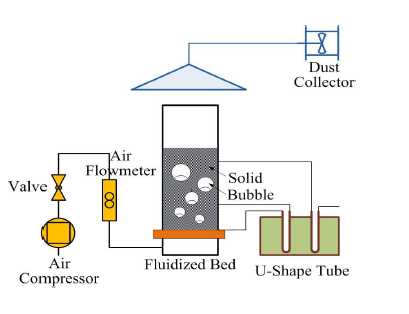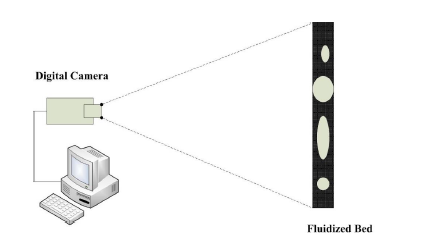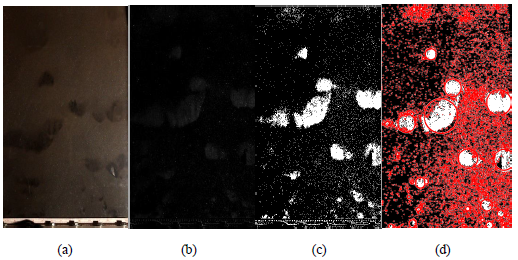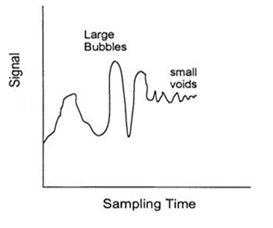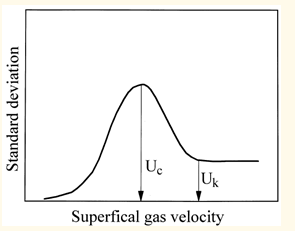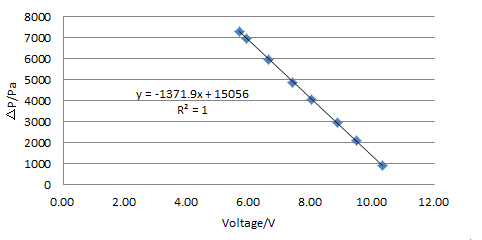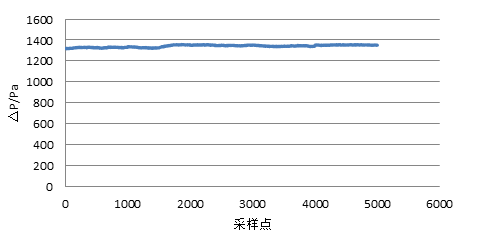视频跟踪法检测流化床颗粒气泡流动状态毕业论文
2020-07-02 22:37:59
摘 要
本实验在15000mm×370mm×19mm的二维床中,通过视频追踪法捕捉湍动流态化下的床内气泡行为,并用MATLAB进行图片的剪辑与分析,将其转化为灰度值图片和二进制图片,从而确定气泡的尺寸和位置,探究鼓泡流态化和湍动流态化间过渡状态下的表观气速,压降波动规律等。本实验所用的流化气体是室温下的空气,所用的颗粒是属于Geldart A类颗粒的FCC颗粒。结果表明:在二维床中由于气泡只向两个方向发展,因此其过渡状态速度会比三维床理论值小一些,大约在0.4-0.5m/s间;我们用压降标准差表示压降波动大小,发现在过渡状态时压降波动最大,随着气速继续升高至0.6m/s以上,波动会逐渐减小并达到一相对稳定的值,表明湍动流态化的起始;然而事实上床层轴向和径向上的压力波动也不完全相同,也就是说不同位置的流型可能不同,这就表明了过渡状态实际上是个有多种流型组成的非常复杂的过程。
关键词:二维流化床 湍动流态化 视频捕捉法 过渡状态
Video tracking of bubble flow inside a turbulent fluidized bed
Abstract
In this experiment, we capture bubble behaviors in the 2-D fluidized bed( 15000mm length, 370mm width and 19mm thickness) through video tracking. The videos will be cut into consecutive images and processed by the software MATLAB, where the original RGB images are transferred into grey-value images and binary images to locate the position and calculate the size of bubbles. The gas velocity and pressure drop of transition between bubbling and turbulent fluidization are both key aspects of this experiment. Filtered air at room temperature was used as the fluidizing gas, FCC catalyst particles belonging to Geldart group A was used as bed particles. The result shows that the gas velocity at the transition is at 0.4 – 0.5m/s, a bit lower than the theoretical value in the 3-D fluidized bed since bubbles only have to develop in two dimensions. Standard deviation was used to mark the severity of the fluctuation of pressure drop. The fluctuation reaches the maximum at the transition and then decreases with increase of gas velocity. The pressure drop fluctuation gradually reduces to a stable value as the gas velocity adds up to 0.6 m/s, indicating the beginning of turbulent fluidization. Actually the pressure drops in axial and radial direction are not absolutely same, that’s to say the fluidized regime differs at different positions in the bed, demonstrating transition is a complex process consisting many flow regimes.
Key Words: 2-D fluidized bed;turbulent fluidization;video tracking;transition
目 录
摘要 I
ABSTRACT II
- 概述 1
- 课题研究背景 1
- 流态化基本原理 1
- Geldart颗粒分类法 1
- 流态化基本流型及其特点 2
- 从鼓泡向湍动流态化转变的过渡状态 3
- 国内外对于湍动流化床的研究进展与实际应用 4
- 本文主要研究内容 5
- 实验部分 7
2.1 主要原料和仪器设备 7
2.2 实验方法及基本原理 9
2.2.1 图片处理 9
2.2.2 气泡尺寸 9
2.2.3 气泡上升速度 10
2.2.4 过渡状态的确定 10
2.3 结果与讨论 11
2.3.1压力传感器的标定 11
2.3.2过渡状态气速的确定 11
2.3.3流化床中气泡分率的测定 15
- 总结与展望 18
3.1 总结 18
3.2 展望 18
参考文献 20
致谢 23
第一章 概述
1.1课题研究背景
在当今的工业生产中,颗粒的粉末状固体是生产原料的主要形式之一,在石油化学、催化材料、冶金和制药方面,粉末颗粒都有着大量的应用,具有很高的研究价值。相比于液体,这些材料在加工、贮存、运输等方面都面临着许多问题,如何能使这些散状固体物料和液体一样拥有一定的流体所具有的性质,是许多研究人员的目标和愿望。
流态化技术起源于上世纪20年代的第一台流化床粉煤气炉的投入使用(Kunii and Levenspiel 1991)。在长期的操作和研究中,研究人员们发现由于流化床的一些非常实用的优点,如传质传热效率高、床内温度均匀、颗粒处理量大、操作范围宽等,在工业生产上许多领域都有广泛的应用和良好的前景。
1.2流态化基本原理
相关图片展示:
